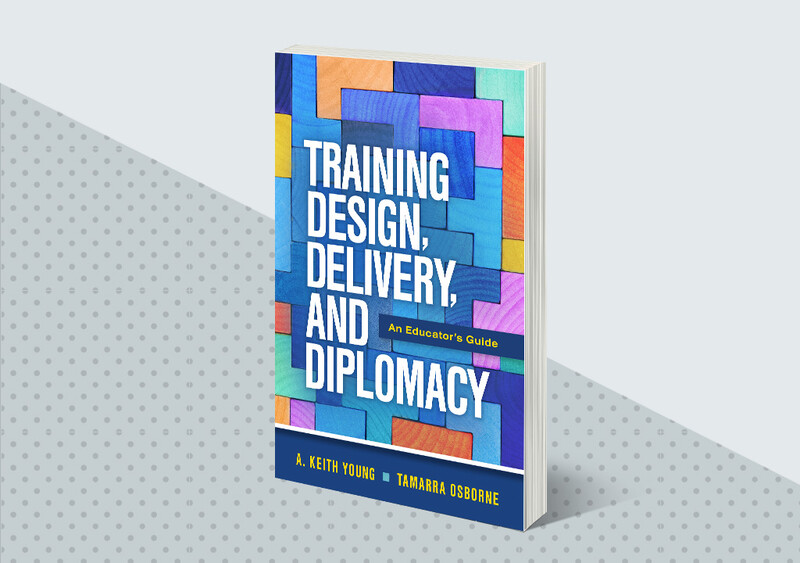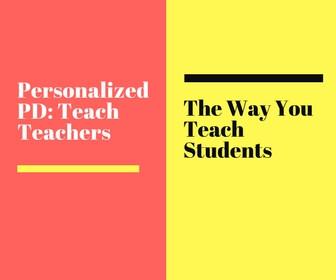Editor’s note: In their recent book, Training Design, Delivery, and Diplomacy: An Educator's Guide (ASCD 2023), seasoned educators and adult learning experts A. Keith Young and Tamarra Osborne offer a roadmap for trainers seeking high-impact strategies in professional development. This resource provides instructional leaders, professional development facilitators, and educators with a comprehensive toolkit to enhance their approach to adult learning.
In this exclusive book excerpt drawn from Chapter 1: "Training Design," the authors explore three pivotal aspects of adult educator learning: honoring adults’ diverse experiences, providing meaningful choices, and differentiating training. These principles form the bedrock of effective adult training, offering insights and strategies to engage learners across the spectrum of experience and expertise.
Appreciate Adults’ Experiences
Adults bring a great deal of experience with them. It is imperative to respect and draw on their backgrounds when their experiences relate to the workshop goals. Even when a participant’s past practice doesn’t align with new learning, appreciate it nonetheless since adults integrate new information by comparing it with their own experiences. In many respects, adults consider their own experiences to be as valuable as the trainer’s background (or any body of research). This belief can be helpful in training if the learner is reflective and if their experiences inform the new learning in a supportive way. On the other hand, training may be more challenging if the new knowledge directly opposes their experience. Effective listening, facilitating discussions, fielding questions, and managing challenging behaviors all merge to create a matrix through which positive intent is the common thread.
Provide Choices
Adults like control, which is why self-directed learning remains a hallmark of adult education. Mainly, most adults are internally motivated and see themselves as equal to their instructors in terms of authority. Help them control their learning during training by having them set personal goals or create specific action plans for implementation following the training. If possible, solicit participants’ input before training to help in the initial design. Ask them what they know—and need to know about the upcoming topic. Then reference the collected data throughout the training and provide options during training. For example, “Do you want to conduct this activity individually or with a partner? You decide.” Continue to solicit input during and after workshops. Check in with participants during breaks for their reactions to activities, workshop pacing, or time for activities. When possible, allow participants to make these simple choices: select your seat, pick your partner, vote on the group’s lunchtime, choose what part of a plan to work on first. Simple tactics such as these help provide attendees with choices, control, and power that are applicable in the workshop environment.
Differentiate
Remember to distinguish your training approach for novice and experienced adults. Frequently, highly skilled participants may be more concerned with the conceptual framework or rationale behind an idea. With this in mind, be prepared to present these professionals with thorough research and ample justification. The need for thorough justification is often why experts benefit from an overexplanation of concepts. Additionally, with their more extensive background, veterans often need help focusing on when and with whom they should apply a new technique. Since they have more experience, the pros typically get the “what and why” of new ideas fairly quickly. Then, they often move to implementation without carefully thinking through when and where the new idea might work best. It may seem counterintuitive to get the expert to slow down and contemplate implementation, but that is precisely what they need; work with them more carefully on how they plan to apply new skills and ideas.
On the other hand, novice professionals may be distracted by too much information and benefit from descriptions with minimal elaboration. They often need procedural matters addressed thoroughly because they frequently struggle to retrieve the massive amounts of information required in doing new work. They also usually take more time to think through issues and put actions into place. Novice educators often need more practice rounds to pick up new techniques. Therefore, it’s a good idea to consider breaking people into affinity groups of novices or experts in training. In small groups, newer colleagues might practice a skill with one another while the veterans work on a plan for when and where to implement the same skill within the existing curriculum.
When planning training, it’s important to ask yourself, “What will participants walk away from the training able to do that they couldn’t do (or couldn’t do well) beforehand?” Write down your answer and use it to guide the remainder of your training planning.
This post is excerpted from Training Design, Delivery, and Diplomacy: An Educator's Guide by A. Keith Young and Tamarra Osborne, Arlington, VA: ASCD. Copyright 2023 ASCD.
Training Design, Delivery, and Diplomacy: An Educator's Guide
Practical advice for education trainers seeking high-leverage strategies for successful professional trainings.









